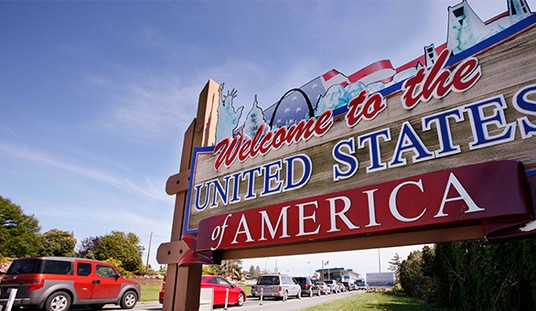The Daily Beast describes how jailers in Afghanistan went into the political wing of their prison one day and found it empty. “As the Taliban tell the tale, insurgents and their supporters had worked like ants for more than five months to dig the tunnel from inside a sympathizer’s house, secretly removing the earth bit by bit in pickups, tractor-pulled trailers and even donkey carts. The tunnel ran from the house, then under the main Kandahar-to-Hiart highway (sometimes called the “Bush highway” after the former president who had pushed for its widening and resurfacing) and finally into a central cell block of the prison’s political wing.”
Bill Roggio quotes sources saying a handful of prisoners were aware of the plot. But most of the digging for the 350 meter long tunnel was from the outside in. The operation, which went on nearly half a year apparently remained undetected. A suicide bombing team was reportedly ready to serve as a rearguard and diversionary element, but in the event they proved unnecessary. US forces discovered suicide vests in the tunnel.
The Sarposa prison is notorious for its lax security. In June 2008, Sarposa was the scene of a major Taliban jailbreak. More than 1,100 prisoners, including 400 Taliban fighters, were sprung from the Sarposa prison by a well-trained assault force, which used a massive suicide truck bomb and heavily-armed fighters to penetrate the front gate. The prison was poorly guarded and the more than 1,100 prisoners easily escaped.
The Daily Beast says that the escape, apart from being a psychological lift for the Taliban, undoes some of the effects of recent victories against the Taliban. Commanders who were painstakingly captured are now on the loose again and have publicly sworn revenge.
The porosity of Sarposa prison’s walls must raise some eyebrows. But divining just who is working for who has long been one of the core intelligence problems in the war on terror. The bad guys have long been known to have associates within agencies partnering with the US, aside from their known links to foreign security agencies. In other words, some of the people working for America’s friends are working for America’s enemies.
A classified document used by military and intelligence officials in the determination of a Guantanamo detainee’s linkages to al Qaeda and associated movements lists the intelligence services of Pakistan, Iran, and Yemen as “associated forces” known to support al Qaeda and allied movements, including the Taliban. The document, titled “Matrix of Threat Indicators for Enemy Combatants,” was one of more than 700 documents released to select news agencies by WikiLeaks. The document has been published by The New York Times.
The suicide bomber who killed 7 CIA agents in Pakistan was a “was Jordanian al-Qaeda triple agent”. He was arrested in Jordan and then was presumed to be working for the CIA. All the while he was working for al-Qaeda. Interestingly, Ayman Balawi, the suicide bomber’s brother, was recently arrested in Jordan after allegedly taking part in protests against the government. The man’s mother said Ayman was innocent, a mere scholar of Sharia law.
‘Security forces arrested my son Ayman Balawi, 36, at midnight on Friday when he was home, although he did not take part in Zarqa’s demonstration that day,’ Shennara Awwad told AFP. …
My son was not even in Zarqa on Friday. He is not a Salafist and he does not belong to the Muslim Brotherhood. He is a sharia (Islamic law) professor,’ his mother said.
This incident suggests that the Arab Spring is now rife, as anyone would have anticipated, with members of the different regional security agencies and clandestine organizations. In these waters US intelligence is fishing, looking for friends, and among them perhaps finding the occasional enemy. Just exactly who Ayman Balawi is; to what extent Afghan jailors can be trusted and which way is up are difficult things to discern in a region where conspiracy, betrayal and secrecy are a way of life.
Roula Khalaf, Middle East Editor of the Financial Times, said that the leaked Wikileaks cables shed amusing light on the way diplomacy works in the Middle East. In normal practice it is almost as if people expected you to lie and where every honest man worked both sides of the street.
what leaders say in private to the US is very different from what they declare in public. Nor is it a secret that Middle Eastern diplomacy is often an exercise in duplicity, as leaders who can barely stand each other warmly embrace in front of the cameras and shower their opponents with kind words. …
Perhaps one of the most disturbing aspects of the revelations is the extent to which political dealings, particularly with Tehran, are based on lies. In one of the most entertaining cables, Sheikh Hamad bin Jassem al-Thani, the straight-talking prime minister of Qatar who is generally seen as more dovish on Iran than his Gulf peers, explained how Doha deals with Iran. “They lie to us and we lie to them,” he told US officials in a meeting last year.
Lloyd Douglas, who wrote The Robe, said of one of his fictional characters: “Demetrius was not unfamiliar with daggers, but had never practiced with one that had been especially contrived for stabbing a man in the back.” But evidently Demetrius had never been in politics or he would have realized that every true dagger is designed to be wielded by a friend.
“No Way In” print edition at Amazon
Tip Jar or Subscribe for $5










Join the conversation as a VIP Member